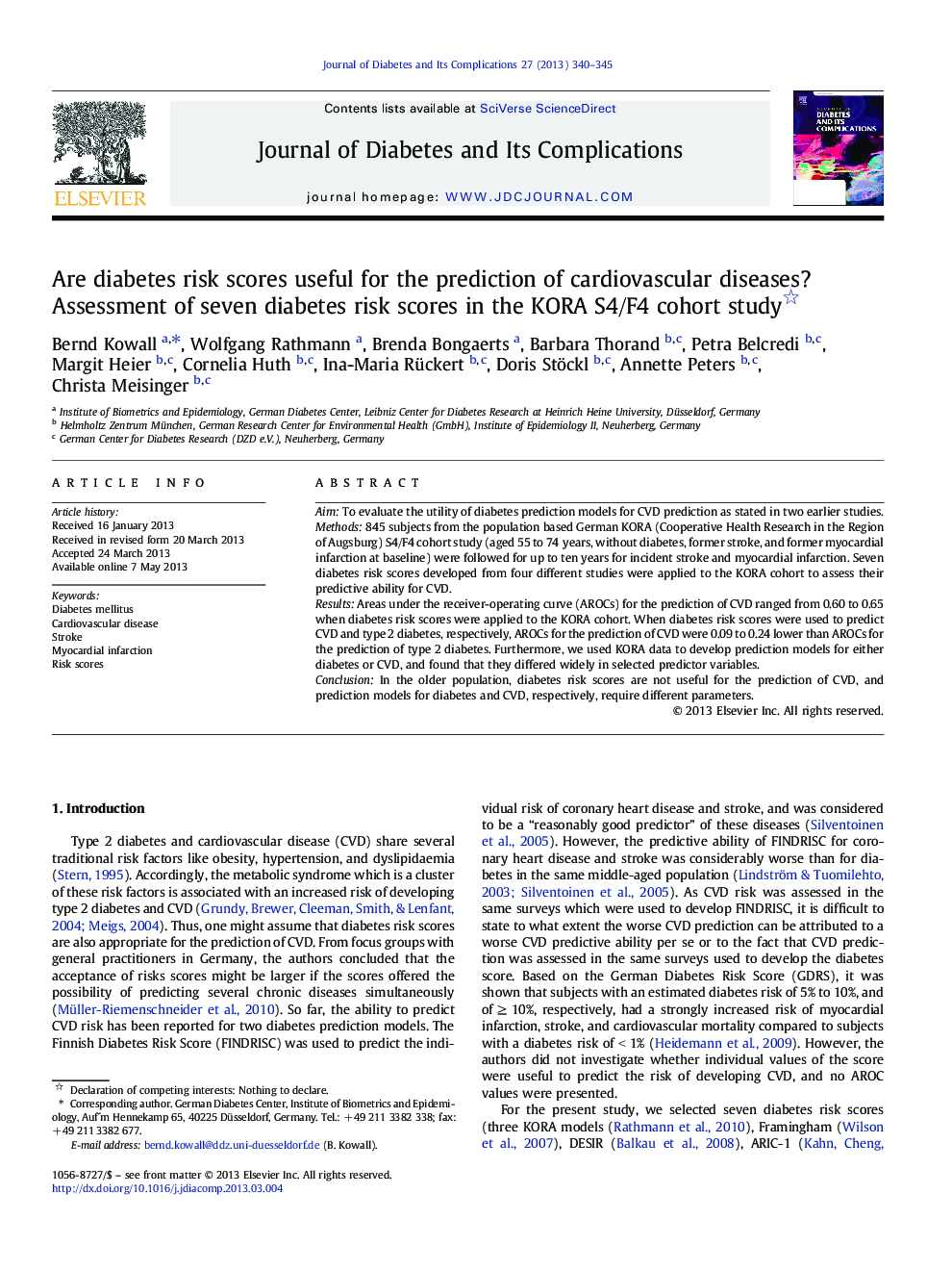| Article ID | Journal | Published Year | Pages | File Type |
|---|---|---|---|---|
| 2804341 | Journal of Diabetes and its Complications | 2013 | 6 Pages |
AimTo evaluate the utility of diabetes prediction models for CVD prediction as stated in two earlier studies.Methods845 subjects from the population based German KORA (Cooperative Health Research in the Region of Augsburg) S4/F4 cohort study (aged 55 to 74 years, without diabetes, former stroke, and former myocardial infarction at baseline) were followed for up to ten years for incident stroke and myocardial infarction. Seven diabetes risk scores developed from four different studies were applied to the KORA cohort to assess their predictive ability for CVD.ResultsAreas under the receiver-operating curve (AROCs) for the prediction of CVD ranged from 0.60 to 0.65 when diabetes risk scores were applied to the KORA cohort. When diabetes risk scores were used to predict CVD and type 2 diabetes, respectively, AROCs for the prediction of CVD were 0.09 to 0.24 lower than AROCs for the prediction of type 2 diabetes. Furthermore, we used KORA data to develop prediction models for either diabetes or CVD, and found that they differed widely in selected predictor variables.ConclusionIn the older population, diabetes risk scores are not useful for the prediction of CVD, and prediction models for diabetes and CVD, respectively, require different parameters.
